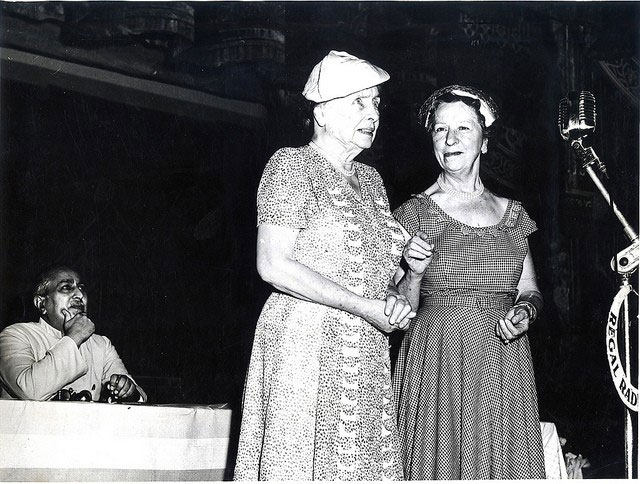by
_____
A new PBS documentary, “Becoming Helen Keller,” retells the famous story of Helen Keller. But instead of focusing on her legendary childhood, the lens widens to appreciate Keller’s passionate advocacy and activism.
Though she lived until age 87 and became an accomplished writer and activist, Keller continues to be immortalized as a child.
In the US Capitol, you can see the bronze statue of her at the water pump, at the moment when her teacher Annie Sullivan spelled out w-a-t-e-r in Keller’s palm.
What’s little-known is the story of Keller’ s 50-year public speaking career, advocating for the poor and disabled, for worker’s rights and social justice. She was the most famous female speaker of her day — and her radical vision of worker’s rights and world peace was widely accepted and admired around the globe.
From 1924 until 1968, working for the American Foundation for the Blind, Keller toured the US and 35 countries, using her celebrity and voice to advocate for the disabled and people living in poverty, labor rights, socialism, woman’s suffrage, world peace, against racism, and many other causes.
She gave her first speech on February 6, 1913, in the auditorium of the Hillside School in Montclair, New Jersey, with a call for worker’s rights and greater economic equality.
“We are all blind and deaf until our eyes are open to our fellowmen. If we had a penetrating vision we would not endure what we see in the world to-day. The lands, the life, the machinery belong to the few.”
It was a theme she returned to again and again.
Keller delivered hundreds of speeches and wrote 14 books, and many essays.
She joined the Socialist Party of America— her book How I Became a Socialist was burned by the Nazis.
She supported the NAACP and became an original member of the American Civil Liberties Union. She joined the Wobblies (the Industrial Workers of the World). She supported the now-discredited theory of eugenics and spoke about the dangers of human overpopulation.
Her most famous speech was “Strike Against War” — delivered January 5, 1916, at an event at Carnegie Hall organized by the Women’s Peace Party and the Labour Forum. An ardent pacifist, she called for working class people to use the power of the strike to end America’s involvement in World War I.
But there were so many more. My personal favorite is one she delivered on March 27, 1930 to congressmen serving on the Committee on the Library, in Washington DC.
“Have you ever tried to imagine what it would be like not to see? Close your eyes for a moment.”
Keller had spoken to many state legislatures, but this was her first appearance in Congress. She was there to support a federally-financed program to create Braille books.
“Books are the eyes of the blind,” she told the lawmakers. She asked them to close their eyes and, for a few moments, imagine the world of the blind.
“Have you ever tried to imagine what it would be like not to see? . . . Go to the window keeping your eyes shut. Everything out there is a blank — the street, the sky, the sun itself!”
It would take another year of congressional wrangling, but the bill finally passed.
In March 1931, President Herbert Hoover signed the Pratt-Smoot Act, authorizing the Library of Congress to provide Braille books and library services to individuals who were blind, visually impaired, or physical disabled.
In honor of National Disability Employment Awareness Month, let’s celebrate the passionate, humanitarian voice and advocacy of Helen Keller.
© Copyright 2021
________________________________
Want to talk? Reach me at dana@danarubin.com


